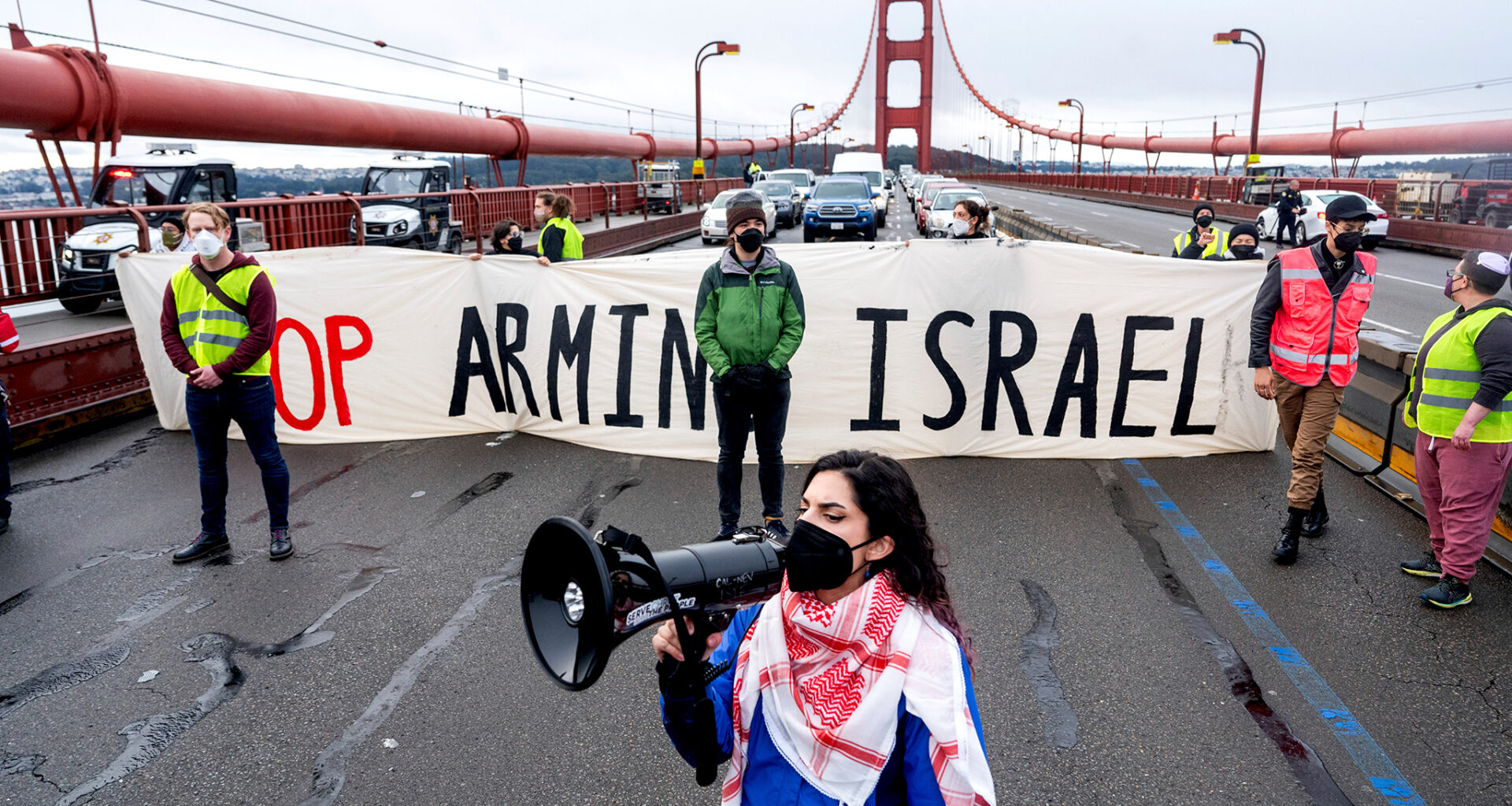A year and a half after protesters chained themselves together and shut down the Golden Gate Bridge for four hours during the morning rush, the bridge district says the disruption cost hundreds of thousands in toll revenue, and it wants that money back.
On Friday, the Golden Gate Bridge, Highway and Transportation District refused public calls to drop its push to make the protesters pay the net loss in toll revenue.
“Waiving restitution would open the door for more frequent Bridge blockages for a litany of causes,” the agency said in a statement. “… It is in the best interest of our customers, employees, and the community to discourage, rather than encourage, more frequent blockages of the Golden Gate Bridge.”
Some facing restitution and ongoing charges feel like they’re being politically targeted.
“It feels like a politicized attack on this particular demonstration, so demonstrations just don’t happen again,” Manan Kocher, one of the protesters, told Mission Local. “The Golden Gate Bridge has been the site of protests that have moved the needle toward justice before.”
The bridge district pushed back in its statement, noting that past demonstrations, including one involving actor Woody Harrelson, were treated differently because they didn’t “set foot in a traffic lane.” The agency, which relies on the tolls rather than local tax revenue, said the April 15, 2024, closure cost an estimated $160,000 in lost toll revenue, money it called “essential” to maintain and operate the bridge. The landmark is projected to experience a $24 million shortfall this fiscal year.
During the protest, roughly 12,000 vehicles typically cross the southbound lanes of the bridge between 8 a.m. and noon, the SF District Attorney’s Office said in a 2024 release. The protesters arrived together in vehicles and bicycles, and came with “predesignated assignments” to ensure the protest would be as disruptive as possible.
The DA’s office alleged that the group used devices known as “sleeping dragons” to chain themselves to cars parked across the bridge’s southbound lanes, making it impossible for traffic to move. Despite a police liaison telling the group that their protest was “obstructing traffic,” the protesters continued, remaining chained together until officers and firefighters cut them free around noon.
The protest was a part of a nationwide day of action known as “A15,” which sought to disrupt traffic and economic activity in multiple U.S. cities to demand an end to U.S. support for Israel’s war in Gaza. Besides the U.S. 101 through the Golden Gate Bridge, sections of northbound and southbound Interstate 880 were blocked in Oakland as well.
“The California Highway Patrol recognizes and supports everyone’s First Amendment right to protest and assemble, but that right does not extend to blocking roadways and preventing the free movement of others,” said CHP Chief Don Goodbrand in a 2024 San Francisco District Attorney’s Office news release.
SF District Attorney Brooke Jenkins, who following the protest said that delayed motorists “may be entitled to restitution,” added in the statement that throughout the four-hour shutdown, hundreds of motorists were trapped, including a surgeon who had to cancel scheduled operations, a mother who missed a pre-surgery appointment for her baby, and another driver who reported missing a pre-op appointment for brain surgery to remove a tumor.
“While we must protect avenues for free speech, the exercise of free speech can not compromise public safety,” she said in last year’s statement.
Jenkins charged 26 people in August 2024 in connection with the demonstration. By November 2024, the majority of the felony conspiracy charges were dismissed.

